I was humming a tune from an old Greek movie as I sauntered into Centro, changing the “but never” lyrics to the more apropos, “…but only on a Sunday, a Sunday, a Sunday…”.
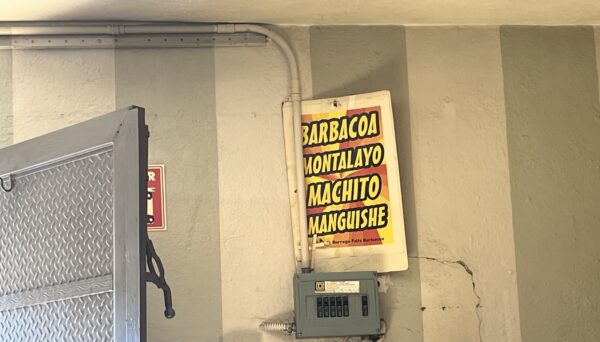
I was meeting up with my buddy Andy, my eat-just-about-anything buddy Andy. On separate occasions, we’d both spotted a fancy sign on the wall at one of our favorite taco spots. There were four words on it. Barbacoa. Montalayo. Machito. Manguishe. The first three words? Yes, we knew what they were. Yes, we’d eaten them all. But manguishe. Never ever heard of it.
I’d asked Gabriel, the co-owner and chef of El Borrego Feliz, that favorite taco spot, if I could try some manguishe.
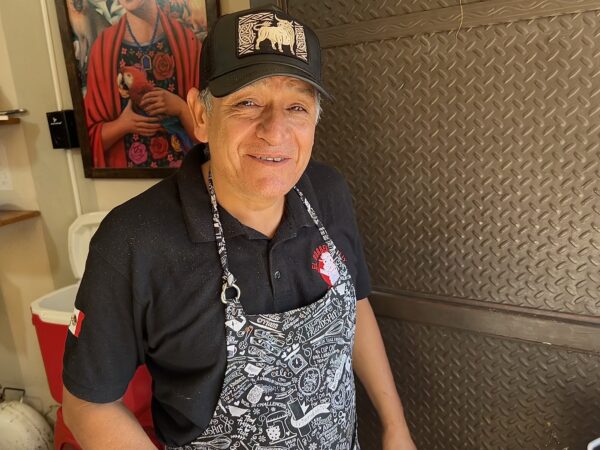
“Of course, he said, but only on a Sunday. We only serve it on a Sunday.”
I went home and did a Yahoo Search. Manguishe brought only variations on anguish. And yes, my pun was intended.
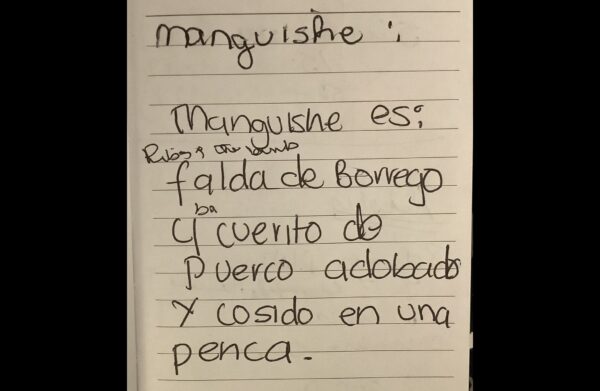
One of El Borrego’s regulars tried to help me solve the dilemma. She asked Rosa, Gabriel’s wife to write down the main ingredients for me and put them in an email. I looked at them. Over and over. Is there something called terminal anguish?
A couple of weeks later I ran into Andy with the usual suspects in Kenny’s and we agreed to meet and lose our manguishe virginity. I emailed a few other guys to see if they’d care to join us. They were unanimous. All nays. Perhaps I shouldn’t have used the words intestines in my invite.
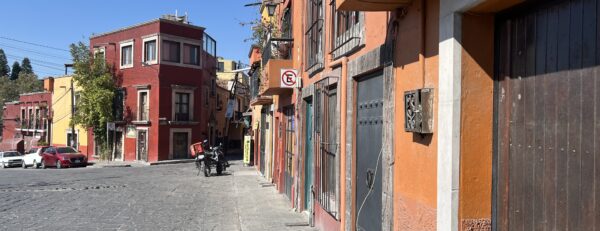
I turned onto Calzada de la Luz and the big yellow BARBACOA sign could just be made out in the distance. Andy was already sat at the table.
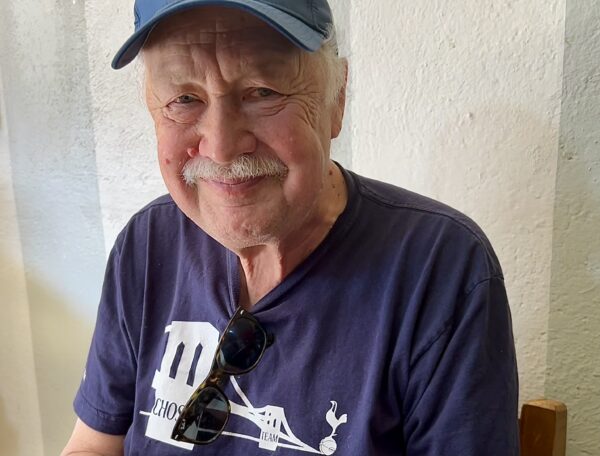
Every taco spot serves cola. Next to no taco spots serve diet cola. But some taco spots hate to say no. We asked Rosa if she had Coca Light. Without even a short pause, she said yes, walked out of the front door and, three minutes later, returned from the tienda down the street with two ice-cold 600 ml bottles in hand. It’s not just food that makes a restaurant very special.
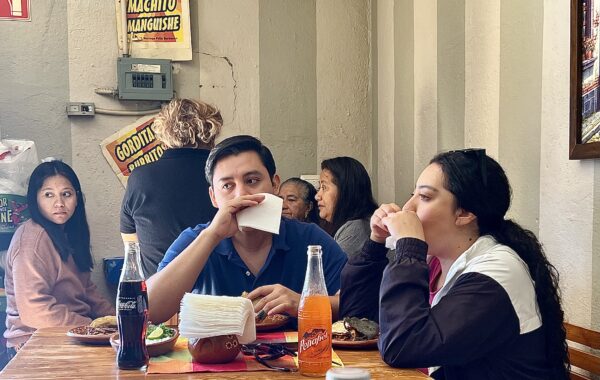
Those four words on that El Borrego Feliz sign are the four different tacos that they serve. It wasn’t difficult to know which ones I wanted.
“I’ll have one of each taco, the barbacoa, the montalayo, the machita, and that mysterious manguishe”, I said to Rosa.
Andy’s order wasn’t as wordy. “Ditto”, he said to Rosa.
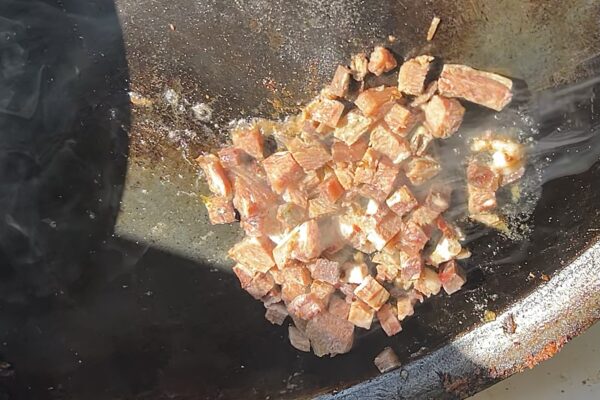
Now I realize there’s the occasional person who might not regularly eat barbacoa, some people who’ve perhaps never ever tried montalayo, and an enormous amount of people who’ve probably never even heard of machita, so why were we ordering them when we were there to first have manguishe touch our tongues.
If you’ve had them before, you might understand. Mexican recipes do something to lamb that no other countries quite do. Mexico takes the taste of lamb to another level.
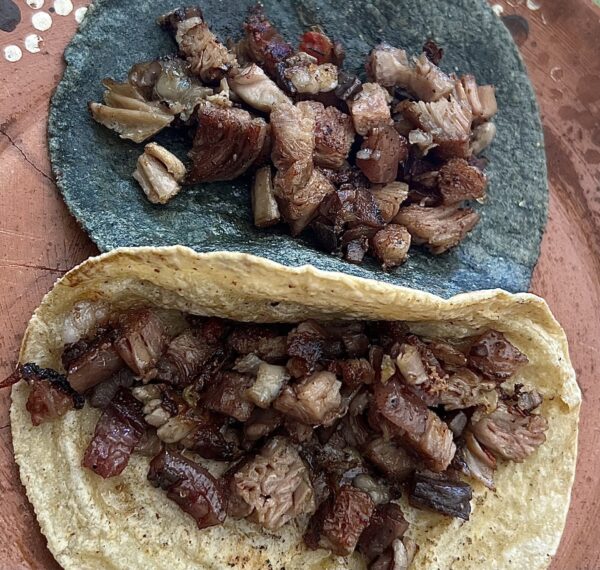
The tacos started to arrive. Some on blue tortillas, some on white. I went up to the counter and Gabriel showed me the blue, almost turquoise masa.
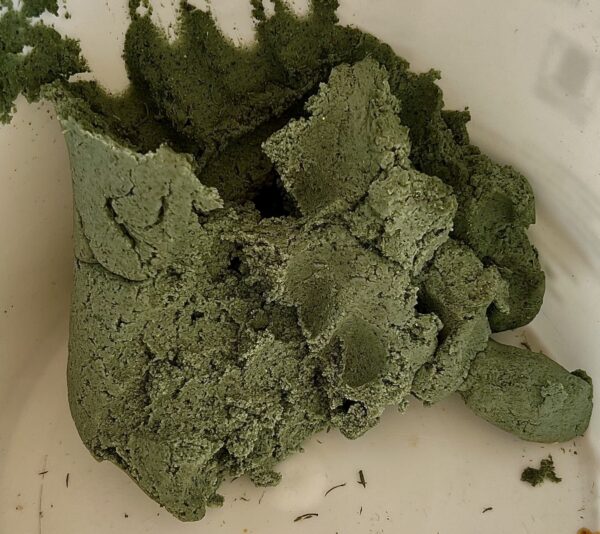
“Con colorante artificial?”, I asked.
“No”, he said, “all with real blue corn”.
I’m never sure that blue tortillas taste all that much better than white…or is it beige…tortillas but it seems so.
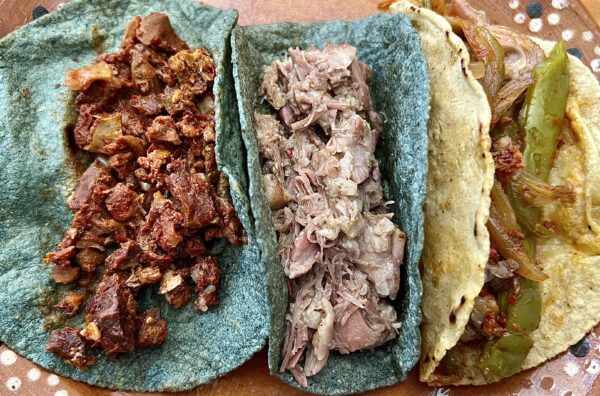
The barbacoa melted in our mouths. The montalayo, miscellaneous organs cooked inside a sheep’s stomach, was superb. The machita, the one mostly made of intestines, was extraordinary.
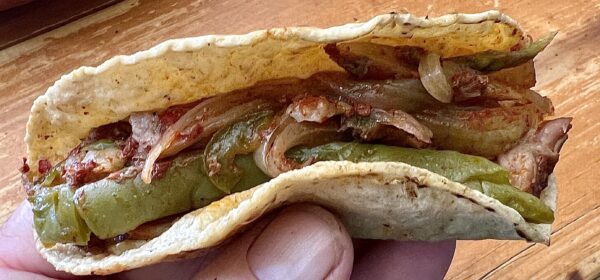
And then came the manguishe.

“Amazing”, said Andy. “I don’t know what it is but it’s wonderful.”
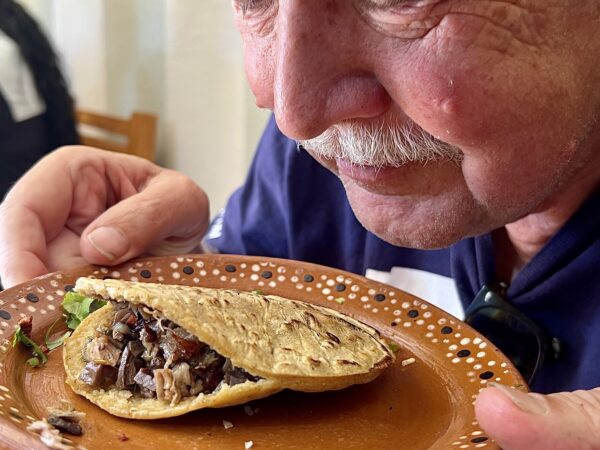
Normal human beings would have been satisfied and left. But the word “gorditas” was on another sign in El Borrego Feliz. “Little fat things” might be the best translation of gorditas. Big fat things might be where Andy and I were headed. We ordered them with machita. As much as we loved the novelty of manguishe, we loved the tradition and taste of those intestines.
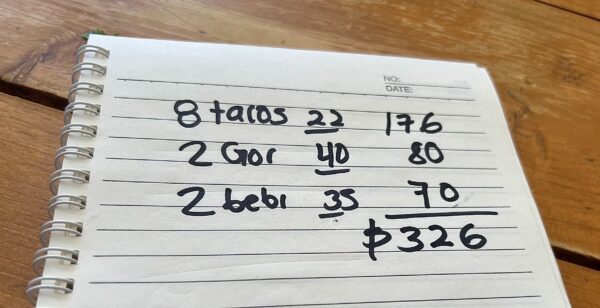
Andy paid the bill and waddled off to watch soccer at Kenny’s Bar. I thanked him and toddled off to get the number 8 bus up Salida Real a Queretaro.
It didn’t take long after I was home before I was on WhatsApp to message Gabriel and Rosa. I was almost as thirsty for info on manguishe as, two hours before, I was hungry to eat it.
I heard back within minutes.
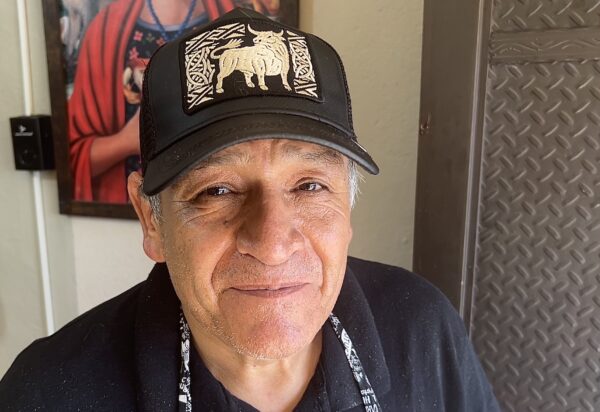
“Con gusto te explica”, they told me. And it soon became obvious why there was no sign of the word in any dictionary, any encyclopedia, online or off.
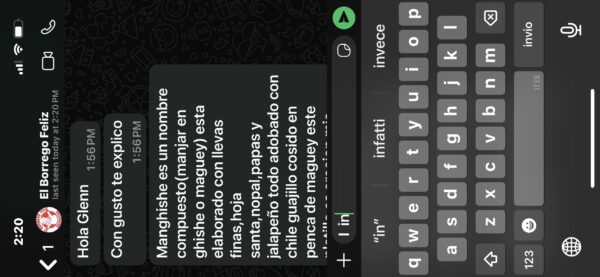
Manguishe, they explained, was a made-up word. A creatively-crafted, made-up word. Made up by Gabriel and/or Rosa. It was what Miss Foreman, my grade six grammar teacher, called a compound word.
In Spanish, un manjar is a delicacy. Guishe, part two of the word, is the pulp inside the fleshy leaves of the agave or, as it’s called in Mexico, maguey.
Put them together and you’ve got manguishe. I got it. I liked it. I liked saying it.
But what about the ingredients? How was manguishe made? Lamb was an easy choice. I could smell the lamb. I could taste the lamb. But what part?
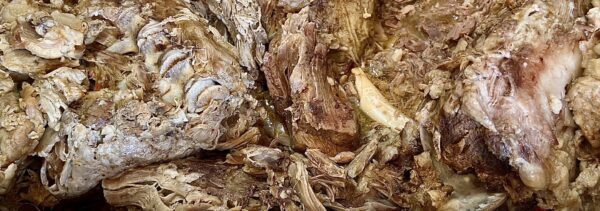
“Falda de borrego” is what El Borrego Feliz’ reply message told me. Falda translates as skirt and, when it comes from a cow, skirt is what Mexicans usually use to make arrachera steaks.
My mother used to call it “breast of lamb” and I remember how it took forever in the oven to get the meat to fall off the bone.
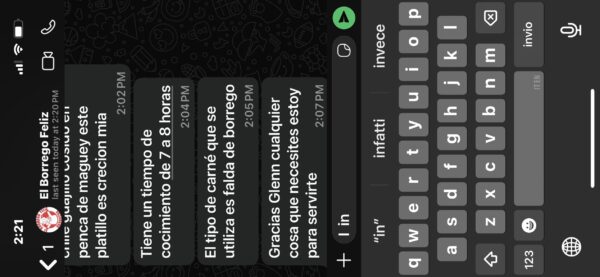
“7 a 8 horas”, Gabriel and Rosa said in their message and it detailed how the meat was marinated with chile guajillo and cooked inside a maguey plant with nopales (cactus), potatoes, jalapeños and hoja santa leaves.
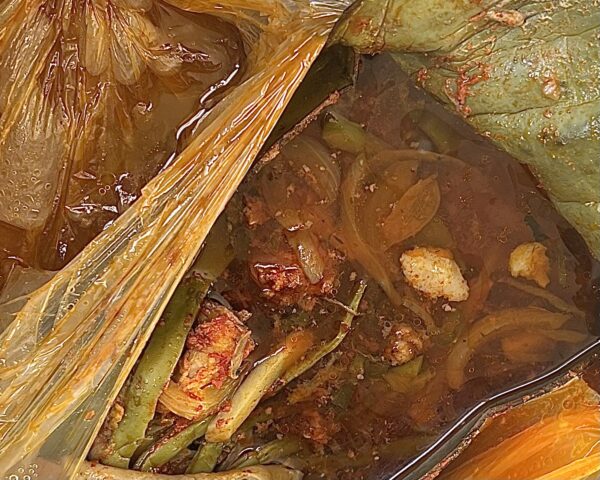
Manguishe. I knew where the word came from. I knew how it was made. I knew probably the only place in the whole world I could eat it.
“Whatever you need, I’m here to serve you”, was the last line in El Borrego Feliz’ message.
I know what they’ll be serving me again on some Sunday soon.
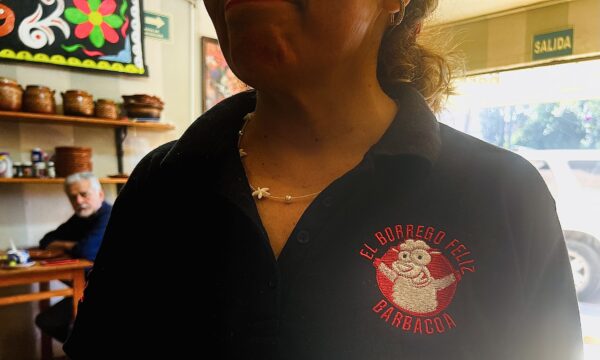
El Borrego Feliz is located at Calzada de la Luz 53, in San Miguel de Allende, Mexico. They’re open on Mondays and from Wednesday to Saturday from 9:00 to 3:00; on Sundays (when they serve manguishe) from 8:30 to 3:00. For delivery, call 415 192 5992.

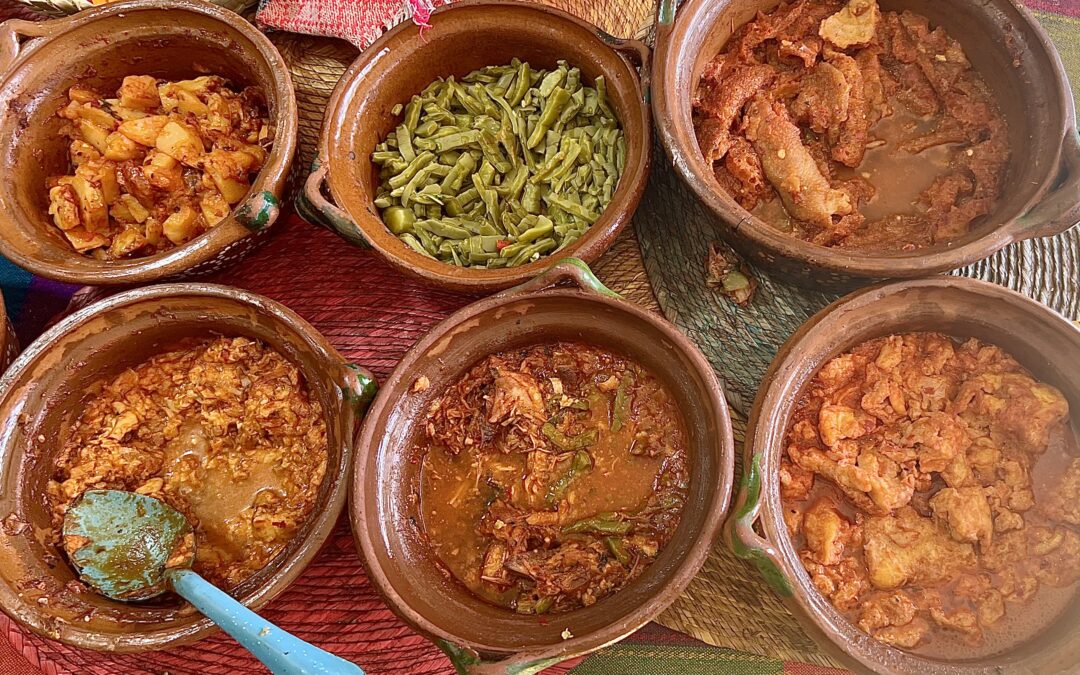
I get such entertainment from reading your reviews! Helps me through my anguish from not being there :-).